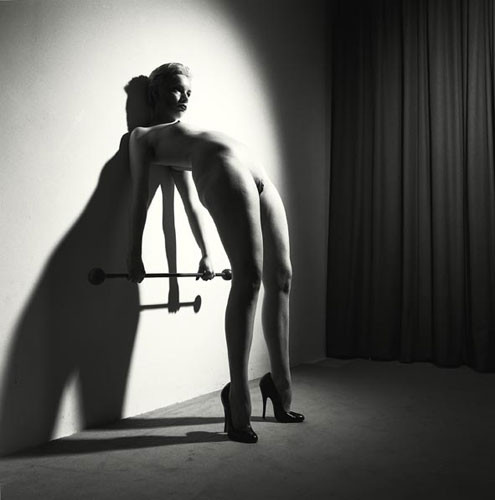Gilles BERQUET
21 Apr - 26 May 2007

© GILLES BERQUET
Sans titre, 2007
tirage argentique contrecollé sur carton sans acide, cadre bois et verre
52 x 52 cm
edition 6
Sans titre, 2007
tirage argentique contrecollé sur carton sans acide, cadre bois et verre
52 x 52 cm
edition 6
GILLES BERQUET
"ENVOIS DE LENOIR"
If you don't leave the door open for lies, the truth can't get in either.
Who is Lenoir?
If your basic idea is to reveal reality as an illusion, you don't have to distort it at all for it to end up looking pretty weird in terms of normal expectations. ENVOIS DE LENOIR/DISPATCHES FROM LENOIR is meant as an enigma, a machine for triggering curiosity. Monsieur Lenoir isn't a mad scientist or a criminal psychopath, but he readily behaves like both - and something else at the same time.
The exhibition brings together two series of recent photographs which basically have nothing in common except that each one raises the issue of what's true and what's false. First comes a collection of items, mostly photographed in bell jars against a black background, using a large-format view camera: a paradoxical inventory, a cabinet of anatomical and electrical curiosities that look like light bulbs, that are alive, artificial, dead, decomposing or totally volatile. This series is a trap. Inside one of the bulbs is the head of a dog, a real dog - too real maybe. Inside another is a frog sitting cross-legged, a latex figurine straight out of a more fake than real Walt Disney(!) production. The subjects are all shown on the same scale, which makes it impossible to assess their true size or to compare them.
The second series is another inventory, this time of perverse, voyeuristic games. As with the "light bulbs", there's a visible mise en scène designed to foreground the fictional element.
Some of these images seem to have a "digitally doctored" look. It's standard practice these days, especially in the case of the body - in fashion as much as in art - to retouch images so as to make them more attractive (or, on the contrary, more monstrous. But mise en scène isn't necessarily falsification: the testing-out involved here has as much to do with personal exhibitionism as with the weirdness of the situation. It's this kind of misconduct that gives the images their interest, the intention being to demonstrate a physical attractiveness seen as existing beyond the clichéd eroticism that no longer interests anybody.
"ENVOIS DE LENOIR"
If you don't leave the door open for lies, the truth can't get in either.
Who is Lenoir?
If your basic idea is to reveal reality as an illusion, you don't have to distort it at all for it to end up looking pretty weird in terms of normal expectations. ENVOIS DE LENOIR/DISPATCHES FROM LENOIR is meant as an enigma, a machine for triggering curiosity. Monsieur Lenoir isn't a mad scientist or a criminal psychopath, but he readily behaves like both - and something else at the same time.
The exhibition brings together two series of recent photographs which basically have nothing in common except that each one raises the issue of what's true and what's false. First comes a collection of items, mostly photographed in bell jars against a black background, using a large-format view camera: a paradoxical inventory, a cabinet of anatomical and electrical curiosities that look like light bulbs, that are alive, artificial, dead, decomposing or totally volatile. This series is a trap. Inside one of the bulbs is the head of a dog, a real dog - too real maybe. Inside another is a frog sitting cross-legged, a latex figurine straight out of a more fake than real Walt Disney(!) production. The subjects are all shown on the same scale, which makes it impossible to assess their true size or to compare them.
The second series is another inventory, this time of perverse, voyeuristic games. As with the "light bulbs", there's a visible mise en scène designed to foreground the fictional element.
Some of these images seem to have a "digitally doctored" look. It's standard practice these days, especially in the case of the body - in fashion as much as in art - to retouch images so as to make them more attractive (or, on the contrary, more monstrous. But mise en scène isn't necessarily falsification: the testing-out involved here has as much to do with personal exhibitionism as with the weirdness of the situation. It's this kind of misconduct that gives the images their interest, the intention being to demonstrate a physical attractiveness seen as existing beyond the clichéd eroticism that no longer interests anybody.
